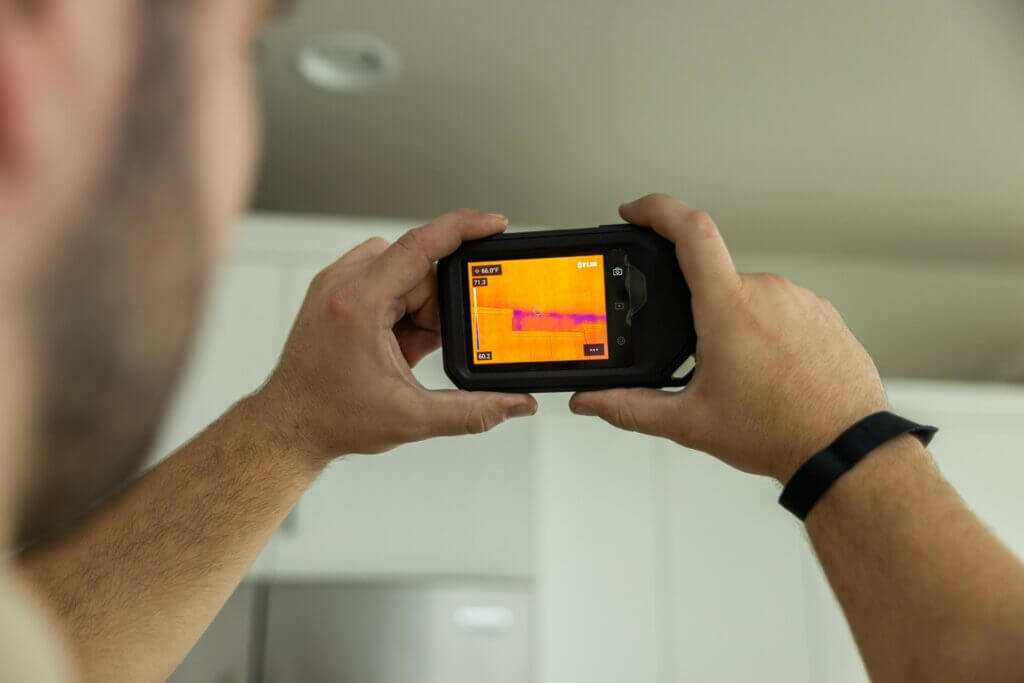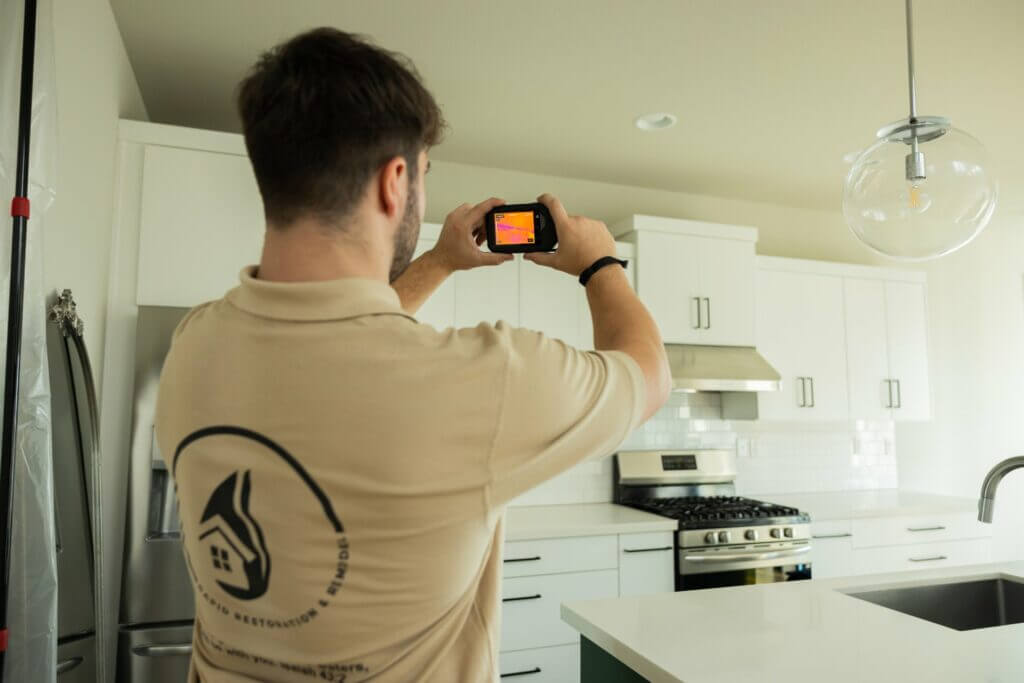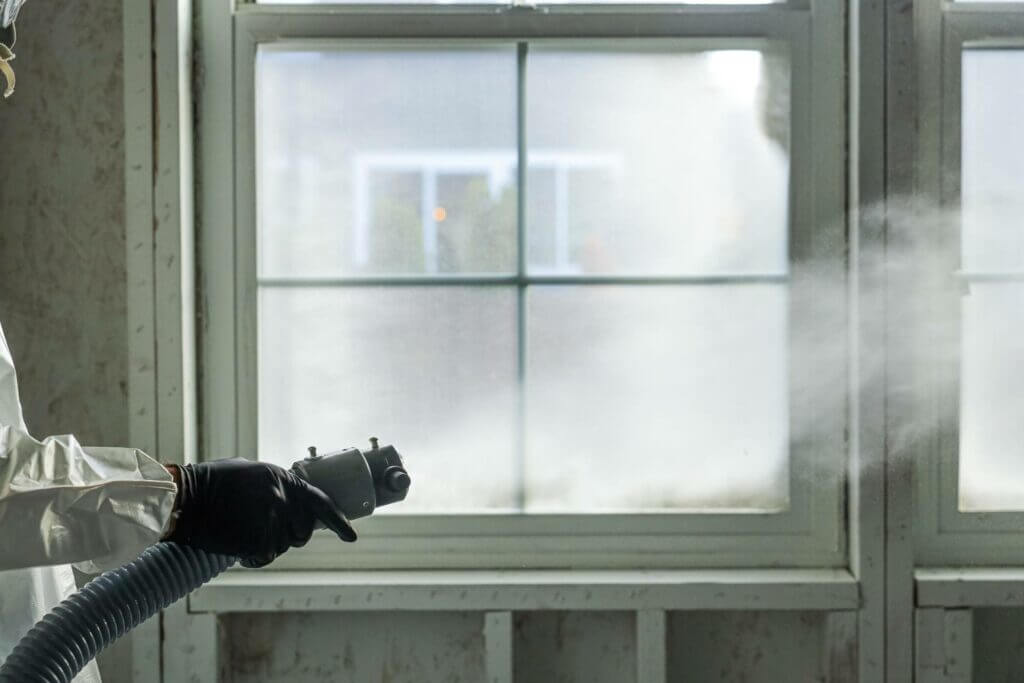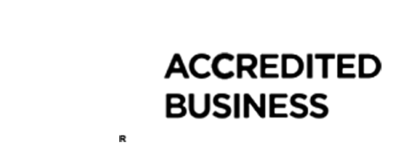“How Long Does It Take to Remove Black Mold: A Comprehensive Guide”
Dealing with black mold is not just a home maintenance issue, it’s a matter of health and safety. This guide delves into the complexities of removing black mold, from understanding the timeline involved to implementing effective removal strategies, all with the aim of safeguarding your home and your family’s health.
Understanding Black Mold
Black mold, scientifically known as Stachybotrys chartarum, is a type of fungus that thrives in damp and humid environments. It can often be found in areas with water damage, such as basements, bathrooms, and crawl spaces. Black mold not only looks unsightly but can also release spores into the air, which can lead to respiratory issues and other health problems.
Identifying Black Mold
Before you start the removal process, it’s crucial to accurately identify black mold in your home. Black mold typically appears as dark green or black spots on surfaces and is accompanied by a musty odor. If you suspect the presence of black mold, it’s highly recommended to seek professional assistance for a thorough inspection. This ensures that you’re dealing with black mold and not a harmless look-alike, and it’s the first step toward a safe and effective removal process.


Importance of Timely Removal
Timely removal of black mold is not just a matter of property maintenance, but a crucial step in safeguarding your health. Black mold’s ability to spread rapidly and release spores into the air can exacerbate health hazards. Prolonged exposure to black mold can worsen respiratory problems and allergies, necessitating costly remediation efforts and posing serious health risks to occupants. The sooner you act, the better you can protect your health and your home.
Factors Affecting Removal Time
Severity of Infestation
The severity of a mold infestation plays a crucial role in determining the complexity and duration of the removal process. Minor infestations, confined to small areas, can often be addressed swiftly with simple remediation methods such as cleaning and disinfection. However, extensive growth spreading across multiple surfaces or deep into materials may require more time-consuming and labor-intensive procedures such as containment, removal of affected materials, and thorough cleaning to ensure complete eradication.
Size of the Affected Area
When dealing with larger affected areas, the scope of the cleanup operation increases significantly, necessitating more robust containment measures to prevent the further spread of contamination. Thorough cleaning becomes more time-consuming as it requires meticulous attention to detail across a larger expanse of space. Additionally, the removal of substantial amounts of contaminated materials adds complexity to the process, potentially extending the time needed for complete removal and restoration of the area to its pre-contamination state.
Type of Surface
Mold’s growth rate can vary significantly depending on the type of surface it inhabits. Porous surfaces such as drywall and wood provide a favorable environment for mold to penetrate deeply, making removal more challenging and requiring thorough techniques to ensure complete eradication. In contrast, non-porous surfaces like metal or glass typically have less capacity for mold to penetrate, making removal relatively more straightforward and less time-consuming.
Presence of Moisture Sources
Preventing black mold from returning is not just about the removal process, but about taking control of your home’s environment. Mold, a type of fungus, proliferates in environments with high moisture content, making damp areas susceptible to its growth. By identifying and rectifying the underlying moisture sources, such as leaks or excessive humidity, you can significantly reduce the risk of future infestations. By eliminating these conducive conditions, not only is existing mold mitigated, but the risk of future infestations is significantly reduced, facilitating a more thorough and lasting removal process. It’s about empowering yourself to protect your home.


How Long Does It Take to Remove Black Mold?
Removing black mold is not a quick fix and requires a systematic approach to ensure its complete eradication. The duration of the removal process can vary depending on several factors, including the extent of the infestation, the size of the affected area, and the chosen removal method.
Assessment and Preparation (1-2 Days)
The first step in removing black mold is conducting a comprehensive assessment of the affected area. This involves identifying all areas of mold growth and assessing the extent of the damage. Additionally, proper preparation is essential before commencing the removal process, which may include sealing off the area to prevent the spread of spores and ensuring adequate ventilation.
Removal and Remediation (3-7 Days)
Once the assessment and preparation stages have concluded, the removal and remediation process commences. This typically employs specialized equipment and cleaning agents to physically eliminate mold from surfaces. Depending on the severity of the infestation, it might be imperative to remove and replace affected materials like drywall or insulation to ensure thorough eradication and prevent recurrence. This meticulous approach is vital for restoring indoor air quality and safeguarding against potential health hazards associated with mold exposure.
Drying and Restoration (2-5 Days)
After the mold has been effectively removed from the affected area, it is imperative to ensure thorough drying to prevent any potential resurgence. Utilizing dehumidifiers and fans can expedite the drying process, mitigating the conditions favorable for mold growth. Once the area is arid, restoration efforts can commence, encompassing tasks such as repairing or replacing damaged materials to restore the space to its pre-mold condition.
Post-Remediation Verification (1-2 Days)
After completing the removal and restoration process, it is crucial to verify the effectiveness of mold eradication to prevent its recurrence. Air quality testing is conducted to assess the presence of mold spores in the environment, ensuring that the indoor air is safe for occupants. Visual inspections are also performed to confirm the absence of any visible mold growth, providing further assurance of a successful remediation effort.


Considerations for DIY vs. Professional Removal
Risks and Safety Concerns
While DIY mold removal may seem like a cost-effective solution, it’s important to consider the risks involved. Potential exposure to harmful mold spores and the improper handling of chemical disinfectants can exacerbate health issues and spread contamination further. On the other hand, professional removal services offer expertise in adhering to safety protocols, ensuring the effective containment and removal of mold while minimizing health risks to occupants. Moreover, professionals possess the necessary equipment and knowledge to handle hazardous materials appropriately, safeguarding both the environment and individuals from potential harm.
Effectiveness of Removal Methods
Professional mold removal services offer expertise in identifying the root causes of mold growth, such as hidden moisture sources or poor ventilation, which DIY methods may overlook. Their use of specialized equipment, like industrial-grade dehumidifiers and air scrubbers, ensures comprehensive elimination of mold spores from affected areas, significantly reducing the likelihood of regrowth. Additionally, professional removal teams follow strict safety protocols and utilize effective mold remediation techniques to safeguard both the property and occupants from exposure to harmful mold particles.
Cost Implications
While opting for do-it-yourself removal methods might appear cheaper at first, the lack of expertise can result in incomplete removal of hazardous materials, such as asbestos or mold, leading to potential health risks and costly repairs down the line. Professional removal services ensure thorough and safe removal, adhering to proper protocols and regulations, thereby mitigating the risk of future health issues and avoiding additional expenses associated with inadequate removal attempts. Investing in professional removal not only safeguards your health and property but also provides long-term cost savings by addressing the problem effectively from the outset.
FAQs (Frequently Asked Questions)
Does insurance cover black mold removal?
Yes, in some cases, black mold removal may be covered by homeowners insurance, especially if the mold growth is a result of a covered peril, such as water damage from a burst pipe. However, coverage can vary depending on the policy and the circumstances of the mold infestation.
Can I remove the black mold myself, or do I need to hire a professional?
While it’s possible to remove small patches of black mold yourself using household cleaning products, larger infestations, and extensive damage typically require professional intervention. Certified mold remediation specialists have the expertise and equipment to safely and effectively remove black mold from your home.
How can I prevent black mold from returning after removal?
Preventing black mold from returning requires addressing the underlying moisture issues that contribute to its growth. Ensure proper ventilation in areas prone to humidity, promptly repair any water leaks or damage, and monitor indoor humidity levels to keep them below 60%.
Is black mold dangerous to my health?
Yes, exposure to black mold can pose significant health risks, particularly for individuals with respiratory conditions, allergies, or compromised immune systems. Symptoms of black mold exposure may include respiratory issues, skin irritation, headaches, and fatigue.
Can I stay at home during the black mold removal process?
In most cases, it’s advisable to vacate your home during the black mold removal process, especially if the infestation is extensive or if you have underlying health conditions. Staying elsewhere temporarily can minimize your exposure to mold spores and ensure your safety.
How can I find a reputable mold remediation company?
When selecting a mold remediation company, it’s essential to do your research and choose a reputable and certified provider. Look for companies with experience in black mold removal, positive customer reviews, and certifications from organizations such as the Institute of Inspection, Cleaning and Restoration Certification (IICRC).
Conclusion
Removing black mold from your home is a complex process that requires careful planning, execution, and follow-up. By understanding the timeline involved and implementing effective removal strategies, you can ensure a safe and thorough removal process. Remember to prioritize safety at all times and seek professional assistance when needed.

